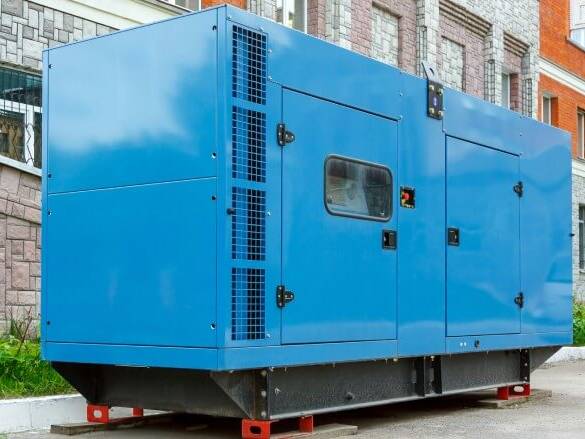
DER is a catch phrase for a variety of energy generation and storage equipment designed to provide grid support using load shedding, backup power, or other on-site technologies. (Exergy restricts the discussion of DER to only those assets that are located behind the meter at the customer facility and not connected directly to the grid, either at the transmission or distribution level.)
There are a wide range of technologies included in this definition, including:
• Backup Generators
• Combined Heat and Power (“CHP”)
• Solar
• Batteries (alone, or combined with Solar)
• Thermal Storage
• Microgrids
Exergy is technology agnostic: We custom develop the lowest-cost, most efficient solution for our customers to meet their sustainability and resiliency goals. Exergy’s solutions never require customer CAPEX; Exergy provides 100% of the turnkey capital. Our solution is Energy-as-a-Service where our customers pay a simple, fixed monthly fee.
Onsite, backup generators are the most ubiquitous solution to protect operations from outages. In addition to the savings from avoided downtime, effectively managed backup generators can save money through peak shaving and participation in grid-support programs. When combined with renewable block contracts, our customers use 100% green power at a fraction of the cost of alternative methods. (If required, generators can be operated on renewable natural gas to achieve zero-carbon footprint.)
CHP units are typically natural gas generators that utilize exhaust heat for process heating and cooling and achieve efficiencies commonly between 70% and 90%. A CHP system saves money by using a single solution for both electricity and heating/cooling.
As attractive as CHP can be, its applicability is somewhat limited to operations that have the correct balance of electricity and heat requirements: If the power-to-heat balance is inappropriate and the system cannot obtain at least 60% efficiency, it will not comply with the Treasury regulations for tax incentives. CHP units, while still using natural gas, can significantly reduce a facility’s carbon footprint. To learn more please visit the EPA website on CHP at www.epa.gov/chp.
Touted as the lowest-cost electricity available, solar has gained worldwide popularity. Solar typically plays a role in every Exergy sustainability solution, though only rarely do we install solar at the customer’s site. Behind-the-meter (“BTM,” or onsite) solar is considerably more expensive (typically 2x to 6x) than utility-scale solar. BTM solar also is more complicated as it requires considerations for roof surface condition and warranty, landlord approvals, limited space availability, and complicated and expensive electronics required to integrate with backup generators and batteries. Even so, some geographies provide such rich incentives that solar is the preferred economic option and Exergy will recommend it when appropriate.
In general, batteries do not represent a financially attractive backup solution for commercial and industrial customers due to their high cost and limited energy storage. Alternatively, batteries can be used to reduce demand charges through peak shaving, but balancing the energy storage available with predicting peak load hours is highly complex, imperfect, and beyond the capability of most organizations. Simply missing one or two peak hours can ruin the cost effectiveness of a peak-shaving battery. If a customer requires resiliency and has a backup generator, a battery’s utility is limited to managing power quality during an outage.
For organizations with critical operations that can’t go down, even momentarily, a great return on investment can be obtained when batteries provide ride through until the generator picks up the entire load. Ride-through batteries are considerably different than traditional “energy” batteries deployed with solar. Exergy has developed a special ride-through battery coupled with EV charging that is considerably more economical for those with critical system needs. To learn more about ride-through batteries, please visit our partner: www.apc.com.
Heat and cold storage systems are typically used to reduce peak load demand. Ice is produced and stored during off-peak hours and used during peak times to reduce chiller load. Hot thermal storage is used in a similar manner, typically to reduce the ramp-up demand during early morning operation. To learn more please visit our partner Organic Heat Exchanger: www.o-hx.com.
This very popular and overhyped term basically means any solution that encompasses onsite generation that can operate in island mode (disconnected from the grid) and operate in parallel with the grid depending on circumstances. A microgrid can be as simple as a backup / standby generator, or as complex as a CHP facility combined with a backup generator, onsite solar, and battery storage. Exergy solutions are basically microgrids, but we refrain from describing it as such due to the term being overly broad and confusing.
Exergy Energy is a Concierge Utility® that provides Energy-as-a-Service, configured to meet your resiliency, cost, and sustainability goals. We are technology agnostic and as a Concierge Utility®, we do what is best for our customers. Exergy: Power that works for you.
